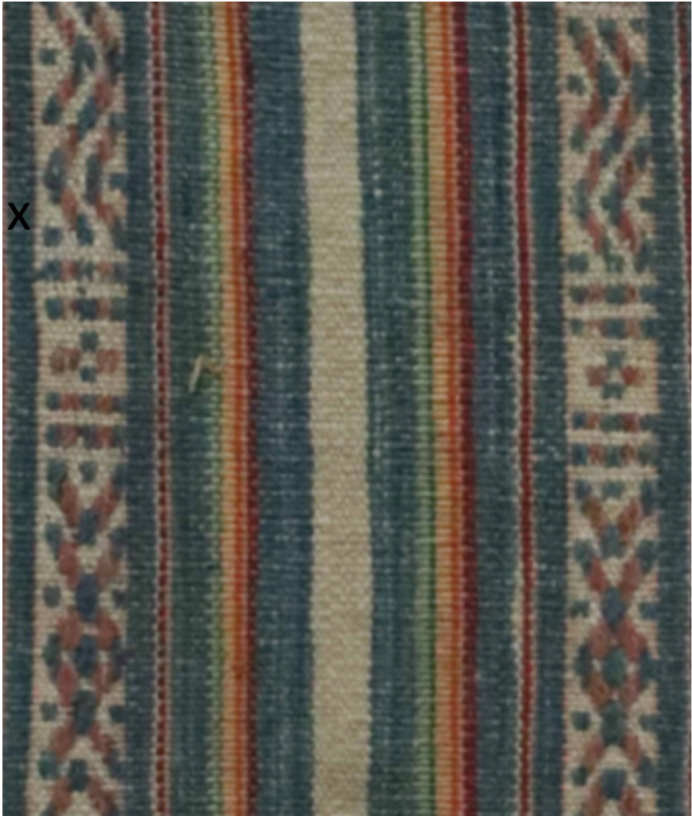Bhutanese Textile Motifs from Trima and Hor Techniques
Bhutan has a rich and diverse textile tradition practiced almost entirely by women. Weaving was a skill learned by young girls from their mothers or grandmothers. The weaving custom varies from region to region, and each textile boasts the technique of its respective region. The textiles are predominately woven from yak wool/hair and sheep in northern and central Bhutan, while cotton, nettle, hemp, and silk are commonly used in the eastern and southern regions. The yarns were dyed using vegetable and naturally available dyes, although they are now mostly imported.
Handwoven using the backstrap, card, and treadle looms, the weaving tradition was formerly concentrated in the eastern and central parts of the country. But in recent times, many weavers have been working and living in Thimphu, the capital city.
The motifs on the Bhutanese textiles are often inspired by nature, man-made structures, and influenced by socioeconomic, cultural, and religious factors. While there are various techniques for weaving motifs in Bhutanese textiles, this article will focus on the Trima and Hor weaving techniques.
Lungserma Shinglo chem from Royal Textile Academy and Textile Museum collection
Mentsi Mathra from Royal Textile Academy and Textile Museum collection
Trima technique
Trima literally means 'coiling the warp'. It is a highly sophisticated technique where the weft yarns are entwined around the warp yarns producing motifs raised above the ground cloth, therefore often mistaken for embroidery. Its intricacy has drawn the attention of textile enthusiasts and connoisseurs across the world (1). Trima is mainly used to weave motifs on the Kushutharas, one of Bhutan's most prominent, valued, and embellished textiles usually worn during special occasions like festivals (Tsechu), weddings, and other important events.
Using silk or cotton threads, the motifs found in this textile include those inspired by nature, for instance, pigeon's eyes, monkey's nails, fly's wings, and horses. Other motifs like stupas, amulets, and eternal knots reference relevant socio-cultural and religions. Highly skilled weavers created complex designs using two distinct categories of Trima patterning:
1. Coiling both thread-ends around the warp, either left or right, forming patterns that resemble an embroidered chain stitch.
2. Crossing weft threads over each other and then up and behind the warp threads forming patterned motifs. (1).
Pigeon’s eye
Monkey’s Nails
Horse motif
Ritual Offering/Torma
DorjiNgagong (Double Vajra)
Fly’s wings
Hor technique
Hor is the supplementary warp patterning method of cross-hatching (i.e. intersecting sets of parallel lines). Hor creates textiles like Aikapur (11 cross-hatches), Lungsem, Mentsi Mathra (7 cross-hatches), and Mentha (5 cross-hatches), usually in silk, raw silk, and cotton. The more cross-hatch, the more complex it becomes. The technique can work up to 17 cross-hatches. Motifs like bird's eyes, eternal knot, and fly's wings are also woven with this pattering technique.
Mentha (5 cross-hatches)
Mentsi Mathra (7 cross-hatches)
Aikapur (11 cross-hatches)
The Hor technique is also applied to a range of popular motifs. Shing-lo is an intricate motif that translates as 'the tree of life' resembling a tree and symbolizes long life. The image on below left shows the Shing-lo motif made with Hor patterning known as Lungserma Shing-lo Chem.
Lungserma with Shing-lo (7 cross-hatches)
Domchuchem with Shing-lo (9 cross-hatches)
Lungserma with Shing-lo (9 cross-hatches)
The motifs on a textile define the environment, cultural and social structure of the weaver's life. Most of the motifs are generational heirlooms, and the weavers themselves do not know how specific motifs came to be. Although we lack information on who created the motifs, the knowledge and significance are well preserved and recreated in their skill and interpretations.
Lungserma Shinglochem from Royal Textile Academy and Textile Museum collection
Reference:
(1) Royal Textile Academy and Textile Museum, Ministry of Home and Cultural Affairs. (2017) Trima: Discontinuous Weft Pattern. Thimphu: Kuensel Corporation Ltd.
(2) Myers, D.K., Aris, M., Pommaret,F & Bean,S.S. (2008). From the Land of Thunder Dragon: Textile Arts of Bhutan. Salem: Chicago Peabody Essex Museum.
(3) Royal Textile Academy. (2013) Thagzo: The Textile Weaves of Bhutan. Hyderabad: Pragati Offset Private Limited.
(4) Coloured photographs from the Royal Textile Academy collection.

















